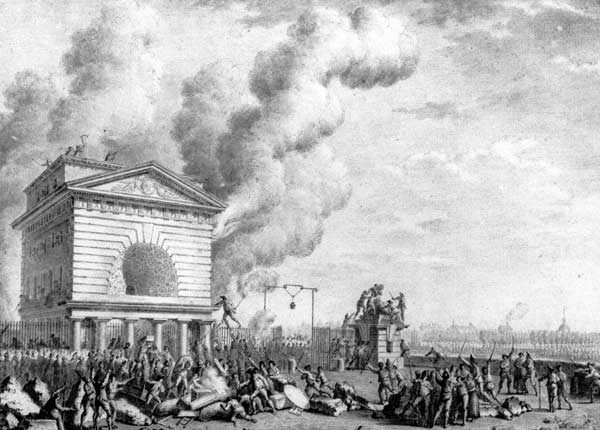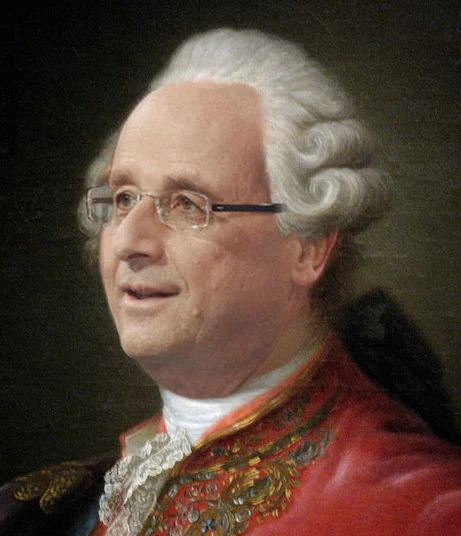On
the fertile agricultural plain surrounding Parma, Italy, you can drive for days
while visiting the region's spectacular Renaissance towns, churches and villas
(below, the view from the terrace of the Castello di Fontanellato) without ever laying eyes on a single cow that gives the milk that is aged to
its glorious Parmesan cheese, nor will you ever see one of the pigs that
eventually yield its succulent Parma ham. One dines spectacularly
well there, even by Italian standards, but exactly how this is achieved is
one of Parma's small mysteries—though an occasional noxious breeze, pungent enough
to strip paint, will assure you that these beasts do indeed lurk somewhere hidden in those broad green fields, just beyond sight.
Franco
Maria Ricci, the legendary publisher, lives on his ancestral lands in
Fontanellato, which he has transformed according to his own unique aesthetic
vision. He is the man who near single-handedly revived the work of the great
neoclassical typographer, Giambattista Bodoni, who had made Parma
his home in the late eighteenth century. Ricci comes from ancient Parmesan
nobility and has dedicated his life to the cultivation and dissemination of all
that is extraordinary, remarkable and beautiful, by way of the pages of his
namesake magazine, FMR ("the most beautiful magazine in the world") and a host of magnificent publications.
Fortuitously, pronouncing his initials in French yields the word ephémère,
ephemeral, and it is this aura of felicity and harmony that this most
cultivated of men has cultivated throughout his life, seemingly effortlessly.
This
past summer, I spent several days with friends visiting Ricci and his charming
companion, Laura Casalis, who graciously welcomed us with their generous
hospitality. A warm, sunny day was reserved for visiting Ricci's estate, and
after traversing miles of sun-struck, open fields with barely a poplar in
sight, we passed a simple modern gate and drove down a long, shaded
and sun-dappled allée of bamboo to find ourselves in another world—a verdant
compound set in a bamboo glade that could just as well be found in Mexico. An
old farm building has been converted into a contemporary entertaining space of
impressive scale—an aerie looking into the bamboo canopy, with an inky-dark
lake to one side.
The
contrast between the sun-struck fields without and the bamboo forest (or
perhaps jungle) within was vivid and delightful; Ricci has crafted his own
private world—even his own private micro-climate. Further on, Ricci has
renovated the ground floor of the crumbling ancestral villa into an elegant
suite of rooms with a barrel-vaulted, neoclassical library which houses the
largest collection of Bodoni's printed works in the world. Like the vast,
Barragan-esque patio compound, the neoclassical grotto beneath the overgrown ruins is a complete, shocking, satisfying surprise.
Further on, some ten minute's walk, lies the most remarkable
of all Ricci's marvels, his bamboo labyrinth, covering 17.5 acres, by a factor of five the largest
maze in the world. The labyrinth, of course, is an ancient cipher representing
man's path through life; its circuitous course, from periphery to center, symbolizes life's journey from ignorance to
self-knowledge and enlightenment.
The plan of Ricci's labyrinth, two overlapping squares,
evokes Renaissance fortifications, and over a dozen species of bamboo have been
planted to form its high, dense allées. Inside its precincts he has constructed
a museum and study center which will house his library and collections, as well
as a visitor's center.
The compound, built of warm rose Roman brick, is
designed in a neoclassical vocabulary and laid out in a series of symmetrical,
generously scaled courtyards, perhaps better called atria.
A triumphal arch greets visitors entering the compound, and the main axis culminates with yet another surprise, a pyramidal folly.
A triumphal arch greets visitors entering the compound, and the main axis culminates with yet another surprise, a pyramidal folly.
The scale of the undertaking is commensurate with the
audacity of Ricci's vision. He chuckled when he said, leading us unerringly through
the maze, that no one would be allowed to enter the labyrinth without a portable
phone, but indeed the rule will be necessary once the kilometres of paths are opened to the
public.
On a final note, Rizzoli has recently published Ricci's book, Labyrinths; needless to say, it too is exceptional.

































